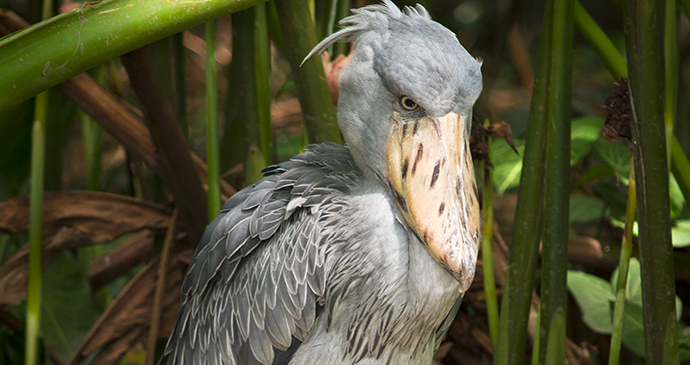


An index of diet generalism was created based on NTD. Life history traits (clutch size, incubation period, fledging time, body mass and generation length), diet (prey weight, body lengths and number of taxa represented in its diet (NTD)) and conservation status (declining/not declining) of 163 waterbird species were reviewed. This study evaluates the relative contribution of reproduction-based life history traits and diet to the population trends in waterbirds from southern Africa. It will be critical to control human disturbance in wetlands. If current climate change trends continue to suppress the populations of these prey bases, then waterbirds are also in imminent danger. Amphibians, coleopterans, crustacea, molluscs and tunicates were consumed by waterbird species across the four waterbird categories. The groups with waterbird species that feed on small and large prey items had higher probabilities of having declining population trends when compared to those feeding on medium-sized items. Using the variety and size of diet items, this study discovered that species could be grouped into four categories, and species that are consumed as food by people could fit into one group. Close to two-thirds of these species are in decline worldwide. The cases of 163 waterbird species found in southern Africa were considered. This study was driven by the interest to know if population trends of waterbird species are affected by their diet, factors linked to reproduction and growth. Species population declines worldwide are worrisome. Unlike many birds, a shoebill may live up to 35 years in the wild and 50 years in captivity. Sadly, only one chick survives to fledge because they attack each other in competition for food. Both parents take turns in raising the chicks.

The female make their nest on water or floating vegetation and lays two eggs, which are hatched by both parents in day and night shifts for one month. The usually silent bird clatters its bill during nesting and mating season, to attract the opposite sex. They reach sexual maturity at three to four years old, where they seek out each other’s company for mating and rising chicks. Breeding.Īlthough the birds live a solitary life, breeding season tends to ignite their social behavior, which leads both male and female to team up. Other places to find it include the lower parts of Muchison falls National park, near lake Albert among others. The Mabamba wetland, west of Entebbe International Airport is one of the most popular places to catch sight of this prehistoric- looking bird. The shoebill is common in swampy areas which provide a vast diet of snakes, lung fish, frogs among others. Many of which are found in swampy vegetation. DietĪs already stated, the bird feeds on lungfish, snakes, grasshopper, tilapia, eels, baby crocodiles among others. Its other lethal hunting technique is to collapse on its prey such that its lungs are filled with water until is suffocates to death. The hooked tip prevents its prey from escaping. The extremely patient shoebill can stay motionless four hours waiting for an unsuspecting lungfish to surface, and then it lashes at it with its shoe shaped bill. The largely territorial shoebill is unique for its hunting skill. The ambush predators have thin long legs with wide feet suitable for walking in water and on vegetation. The shoebill has got round yellow dull eyes, grey feathers, and a small-feathered crest on the back of their heads. However, males are occasionally larger than females. The shoebill can grow as tall as five foot high weigh as much as 3.5 kgs with an eight-foot wingspan. The distinctive grey swamp dweller with a huge shoe shaped bill is a remarkable sight for bird lovers on a safari in Uganda. The bill is five inches wide with a hook at the tip to enable it firmly prevent prey from escaping its life-crushing bill. The bird is unmistakably named after its foot long shoe shaped bill. The shoebill is endemic to the wetlands of Africa, a unique tourist attraction that pulls tourist from across the globe to the Pearl of Africa, in search of the pre historic looking bird species whose uniqueness is astonishingly daunting.


 0 kommentar(er)
0 kommentar(er)
